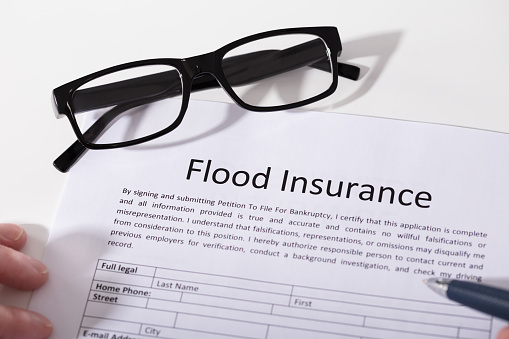Houses are three times more likely to be damaged by a flood than a fire. This is especially true if you live in Louisiana. Our state receives the most flood insurance payouts from the National Flood Insurance Program.
Hurricane Katrina ranks as the most expensive hurricane in U.S. history, with insurance payouts totaling $48.4 billion. In 2015 and 2016, excessive rainfall caused billions of dollars worth of damage in Louisiana. And in 2017, Hurricane Harvey brought even more flood damage to our area.
Does Homeowners Insurance Cover Flooding?
Homeowners or Renters policies may not cover flood damage. If you live in a designated flood plain, your bank may require specific flood insurance before issuing a mortgage.
Lending institutions can be fined for issuing mortgages to high-risk properties not protected by flood insurance. Legally, banks can purchase coverage for such properties and send the bill to the mortgage-holder. But remember, a quarter of claim payouts go to people who don’t live in high-risk areas.
The first time your home or business floods, you may be able to get limited funds from FEMA (Federal Emergency Management Agency). But if you fail to purchase flood insurance and your property floods a second time, you may not qualify for FEMA assistance.
How Do I Buy Flood Insurance?
National Flood Insurance can be purchased through licensed property and casualty agents in over 20,000 communities. Policy premiums and terms are publicly set, standardized and based on risk factors affecting the particular home being insured. This means that your flood insurance policy will cost the same, regardless of which insurance company processes it for you. You can also purchase commercial or rental policies from the NFIP.
Find out if National Flood Insurance Protection is available in your area here.
What Does Flood Insurance Cover?
An NFIP policy covers direct losses caused by flooding, heavy rain, coastal storm surge, snow melt, blocked storm drains, and levee or dam failure. An event is officially a flood if at least two acres or two separate properties are affected.
For residential properties, NFIP policies cover structural damages up to $250,000, on a replacement-cost basis. Adjusters use depreciation and housing market conditions to determine home replacement value. Contents are covered up to $100,000, on an actual cash-value basis. This means any payout would reflect the depreciation of your belongings over time.
For commercial properties, both the structure and content coverages top out at $500,000 each.
It’s possible to insure your home and contents for amounts higher than the NFIP-underwritten policies. Ask your agent about options for purchasing excess coverage (a supplemental policy to an NFIP policy).
Buy Coverage Before Flood Season
Policies won’t take effect until 30 days after purchase. This prevents owners from buying insurance right before a flood. So if you’re not sure of this additional protective measure, you should talk to a local agent about getting coverage today. August and September are usually the most active months for hurricanes in Louisiana. Act quickly to guarantee coverage in the event of a catastrophe.

